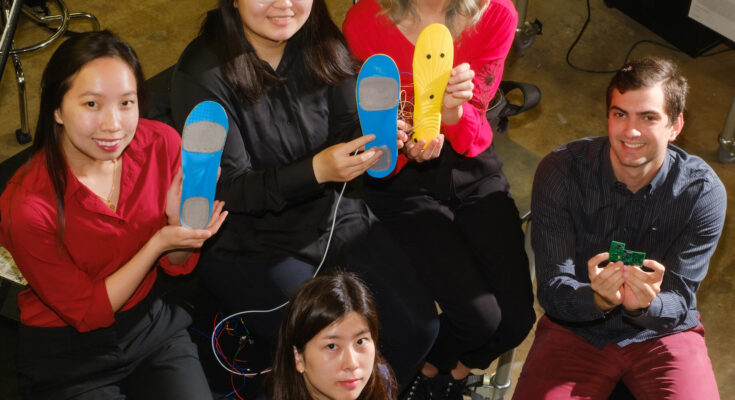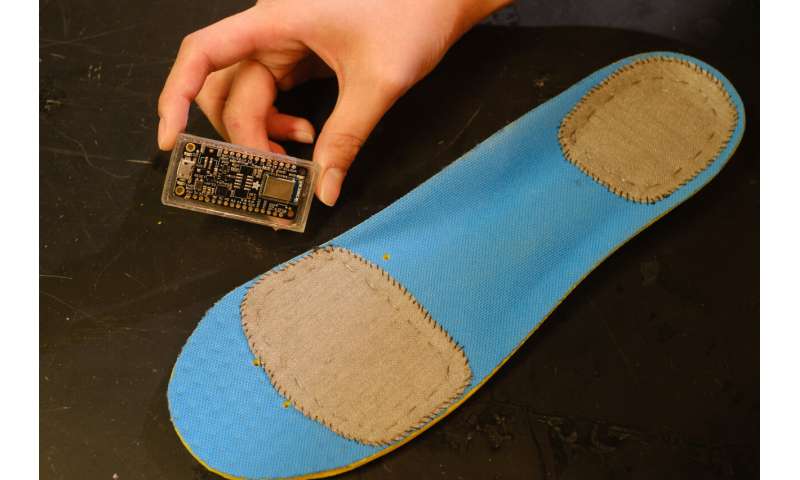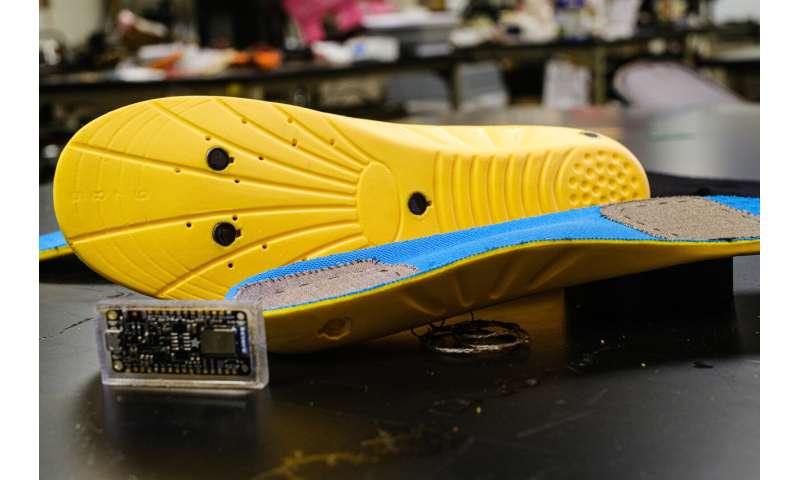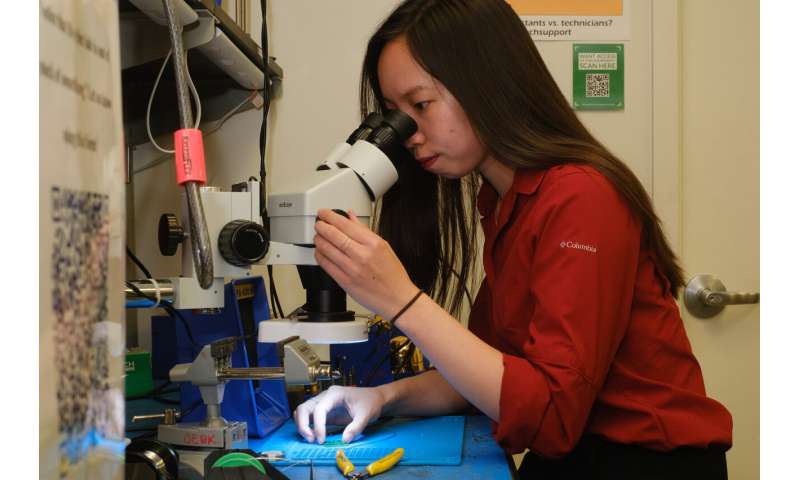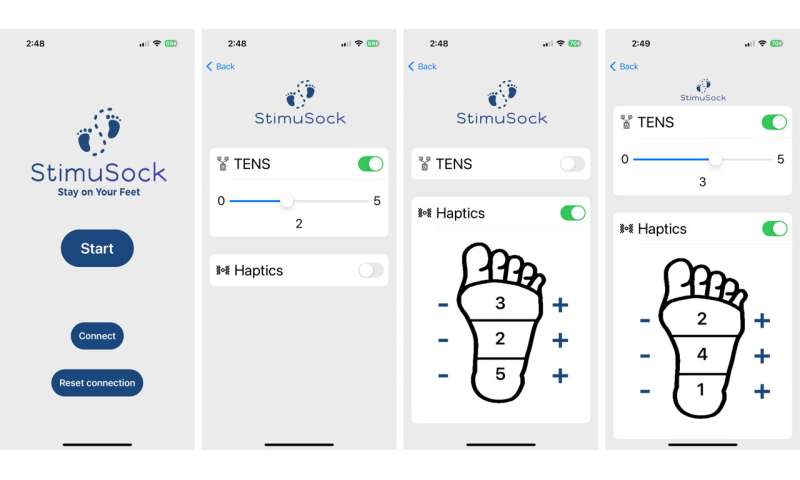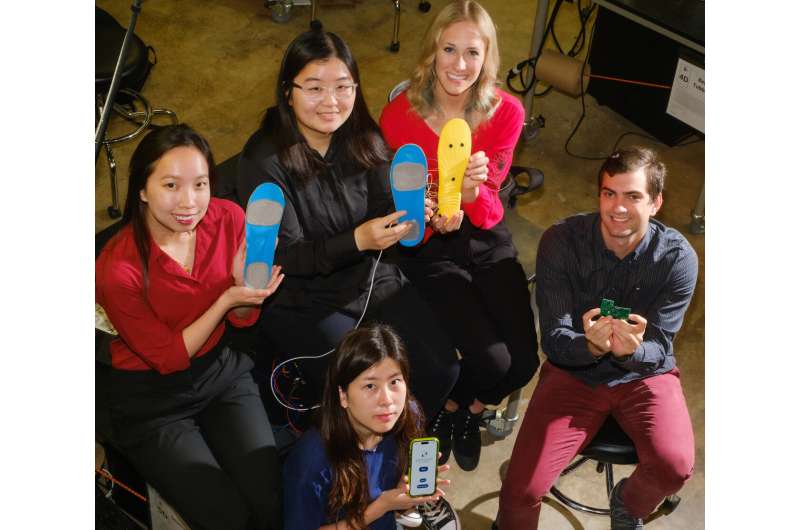
Need a little spring—or buzz—in your step? A wearable electrical-stimulation and vibration-therapy system designed by Rice University engineering students might be just what the doctor ordered for people experiencing foot pain and balance loss due to diabetic neuropathy.
Rice engineering students in the StimuSock team—Abby Dowse, Yannie Guo, Andrei Mitrofan, Sarah Park and Kelly Xu—designed a sock with a smart insole that can deliver both transcutaneous electrical nerve stimulation (TENS) and vibration therapy that block pain signals to the brain and provide haptic feedback to help with balance issues, respectively.
The team will present its device at the annual Oshman Engineering Design Kitchen showcase and competition April 13 at the Ion.
According to the Centers for Disease Control and Prevention’s 2022 estimates, over 37 million people in the U.S. suffer from diabetes. About half of them will develop some form of diabetic neuropathy, a type of nerve damage that occurs most often in the legs and feet.
The StimuSock team sought to combine the best aspects of existing therapies into a single, user-centered design.
“Existing products or devices used to treat the symptoms of diabetic neuropathy are either pharmaceuticals or large at-home vibration devices users stand on,” Dowse said. “But none of them can both treat pain and improve balance, which our device aims to do by combining the TENS and the vibrational therapy in one wearable, portable, user-controllable and easy-to-use device.”
-

Top view of a smart insole that contains transcutaneous electrical nerve stimulation (TENS) fabric electrodes along with a circuit board to control the electrical signals. Credit: Jeff Fitlow/Rice University
-

A smart insole prototype containing vibrational haptics motors embedded in the bottom surface and TENS fabric electrodes sewn on the top surface. Credit: Jeff Fitlow/Rice University.
A lot of the team’s effort went into making the device as low-profile as possible.
“The intent is for the patient to be able to wear the device for the whole day,” Guo said. “Even when everything’s off and they don’t want the electrostimulation or haptics effect, they can still wear their device. … You don’t want it to look like you’re wearing an ankle monitor.”
Patients use a smartphone app to control the type, intensity and duration of the desired therapeutic stimulus. The system also allows users to target a specific area of the foot.
“We have three regions: one in the front of the insole, one in the middle and one at the back,” Park said. “Our aim is to allow patients to be able to control both the amplitude of the vibration and the location where it’s delivered. Some patients might only want vibration at the front of their feet and some only at the back.”
-

Yannie Guo works at the soldering station in the Oshman Engineering Design Kitchen. Credit: Jeff Fitlow/Rice University
-

The StimuSock smartphone app has a minimalist, intuitive design that allows users to choose the type and intensity of therapeutic stimulus. Credit: the StimuSock OEDK team/Rice University
Mitrofan said the team anticipates the device’s final form will have sufficient battery life to provide the recommended maximum of four 30-minute sessions of TENS therapy per day and operate on standby the rest of the day.
The team’s mentor is bioengineering assistant teaching professor Sabia Abidi.
Citation:
Student scientists engineer socks for on-the-go neuropathy treatment (2023, April 13)
retrieved 13 April 2023
from https://medicalxpress.com/news/2023-04-student-scientists-socks-on-the-go-neuropathy.html
This document is subject to copyright. Apart from any fair dealing for the purpose of private study or research, no
part may be reproduced without the written permission. The content is provided for information purposes only.
Source link

